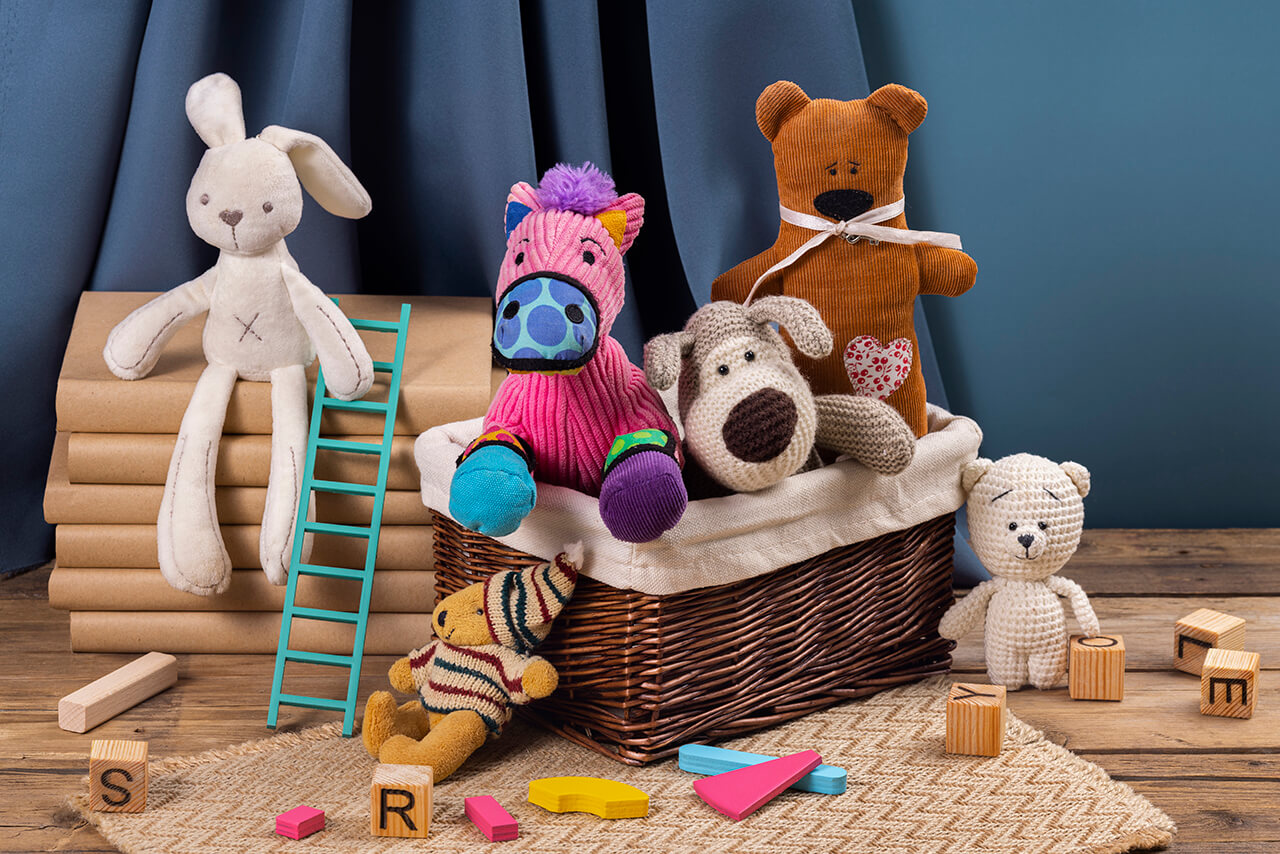
When parents say “good night” to their children, they often overlook the deeper significance of these words. Medical professionals emphasize the importance of peaceful and restful sleep for a child’s well-being.
Sleep provides an opportunity for children to release their minds from the day’s experiences and allow their bodies to rejuvenate. To ensure a serene sleep for your child, it is essential to establish a daily ritual that aids in quick and sound slumber.
Psychologists recommend that parents avoid engaging in any physically active games with their children within 2 hours before bedtime. This advice is well-founded because an overstimulated child may struggle to fall asleep immediately, resulting in a restless night’s sleep.
English pediatricians suggest that parents give their children a calming massage consisting of gentle strokes approximately 40 minutes before bedtime.

In Guatemala, there is an intriguing tradition where 6 small dolls are placed near the baby’s crib. The child selects one doll at a time, sharing any unpleasant experiences of the day with it. The dolls are then placed under the child’s pillow to sleep alongside them. It is believed that the moon takes away all worries and troubles, and the dolls assist in this process.
The French have a more straightforward approach. Children are put to bed at a set time, and their mother gives them their favorite toy, known as a “doodoo.” This toy provides comfort and reassurance to the child during bedtime. It is often passed on from generation to generation.
6 Calming Games for Children Ages 2-4 Before Bedtime:
Often, our children perceive sleep as a form of punishment. Just moments ago, they were enjoying a piggyback ride on Daddy’s back or playing with a ball, and suddenly they were expected to go to bed. They may feel that Mom and Dad will continue to play without them. It’s no wonder they become fussy. It’s important to explain to your child that sleep is necessary for everyone, including adults.
There is an old saying that children become restless in the evening. How can we soothe their restlessness? One approach is to engage them in calm activities for the two hours leading up to bedtime. To help children ages 2-4 wind down before sleep, here are six games described below.

“Treasure Chest”
Parents can create a magical treasure chest using an ordinary box. The box can be decorated with shiny paper or painted in vibrant colors. Together with their child, parents can fill the chest with treasures.
For instance: they can make fairy princess beads using glass beads or buttons, create a crown from shiny foil, weave a small rug from rags, or even draw a portrait of a princess. All of these treasures can be placed inside the magical chest and kept under the bed. This game fosters a child’s imagination and nurtures their creativity.
“The Three Silences”
In this game, the mom, dad, and child practice silence together for two to three minutes, attentively listening to the sounds outside the window. Once the silence period ends, each person takes turns sharing what they heard.
For example: mom might hear two birds engaged in an argument, and she can imagine what they were arguing about. Dad might hear a car complaining to another car, expressing frustration about its owner’s neglect in washing and refueling it. This game encourages active listening and sparks curiosity about the surrounding sounds.
“Who came to visit us?”
Dad, Mom and the children settle into their chairs. Daddy announces that they will have some special animal visitors today. Mom goes first and begins to imitate an animal, while everyone else tries to guess which animal she is portraying.
For instance: Mom might imitate a dog by barking and wagging her “tail” behind her (using her hand). The children not only have to guess the animal, but also share everything they know about dogs. Then, it’s the next player’s turn to imitate a different animal. This game helps children learn about new animals and their behaviors.
“Toy Recall”
The parents arrange a variety of toys on the table and ask all the participants to carefully observe and remember which toys are present. Once everyone has taken a good look, the toys are covered with a cloth, and the children are instructed to turn away and avoid peeking. Meanwhile, their mother discreetly removes one of the toys from the table. The children then have to guess which toy is missing. This game enhances children’s powers of observation and attention to detail.

“Airborne Rug”
A small carpet is placed on the floor. Mom tells the child that the carpet possesses magical powers and can actually fly. Together with the child, she sits on the carpet and asks the child to close their eyes. Then she asks, “Where shall we fly to today?” After uttering the magical words, the carpet seemingly takes off, and they embark on an enchanting journey. Mom begins narrating a fairy tale, unfolding the story step by step during their “flight.”

“Enchanted Sketches”
For this game, you’ll need a sheet of absorbent paper and colored pencils. The child begins to draw, let’s say, a house. Mom asks the child to turn around and describe who lives in the house. While the child shares their description, Mom quickly sketches those characters. When the child turns around, they see the additions and continue drawing.
For instance: if they draw the sun, they describe it as bright and warm. Mommy then adds flowers and trees accordingly. With these “magical” pencils, one can create a beautiful landscape or an enchanting world.
The game plan can be modified by having the child start by drawing a line, and then Mom continues the drawing, and they take turns in this manner. While it is preferable for Mom to have artistic skills, it is not a requirement. Funny and whimsical drawings often bring joy to young children.

“6 Enjoyable Evening Games for Kids Aged 4-6”:
Before bedtime, children aged 4-6 can engage in entertaining and educational games that help them wind down and acquire useful skills.
Fantasy Game: “WHY-CHILD”
Children at this age are full of energy and curiosity, always eager to ask questions. It’s the perfect opportunity to engage their imagination. In this game, an adult poses a question, and the child comes up with a fantastic and imaginative response.
For instance: when asked, “Where do snowflakes come from?” the child might respond with a whimsical answer like, “Santa Claus zooms through the sky in his magical sleight, preparing for the festive season. As he dashes, sparks fly from the hooves of his reindeers, transforming into beautiful snowflakes.” This game encourages the development of a child’s creativity and imagination.
“Find a letter”
Children at this age already know or are learning letters. As a rule, each of them has their own “favorite” letter. For example: the letter G. Open the book to any page and ask your to find his or her favorite letter. Count together how many of these letters are on one page. Then ask him to remember the words that begin with that letter.
“The Hugging Game”
Embrace your child and whisper ten affectionate words into their ear, such as beloved, smart, obedient, strong, brave, talented, caring, beautiful, fearless, and kind. Then, switch roles and listen to kind words about yourself. This game will strengthen your bond and foster confidence in your child.

“The Hidden Word”
When your baby is tucked into bed, write three words on a piece of paper. For example: “AYLOK” is “KOLYA.” Challenge your child to uncover the hidden word. For instance: you can write “TAC” and they have to figure out if it means “CAT”. Remember to write the words in large letters. You may provide one clue, such as revealing the starting letter of the hidden word.
“Drawing from Memory”
Arrange five objects on the bedside table. Allow your child a moment to observe and remember the objects. Next, cover the objects with a cloth and ask your child to draw them on a sheet of paper solely from memory. Once they have finished, uncover the objects on the nightstand and compare their drawing to the actual objects. This game encourages the development of visual memory.
“Fairy Tale for Two”
The essence of this game is for each person to contribute one sentence, resulting in a funny fairy tale. Sentences are created in turns.
For example: the mother says, ‘In a town, there lived a little boy.’ The child responds, ‘One day, he went into the forest and met a little rabbit,’ and so on. It all depends on your shared imagination. By the way, afterwards, you can illustrate the new fairy tale and ‘publish’ your own book. Young writers are usually very proud of their book and proudly showcase it at every opportunity. Who knows, maybe a second book will follow the first. And before you know it, a new writer-storyteller might emerge in our country.
This game can be used as story therapy to help the child overcome various psychological problems.
As you have probably already noticed, all of the above games are aimed at the creative and intellectual development of children.

Do not rush to leave the bedroom immediately after your baby falls asleep. Japanese scientists, studying the work of the brain, found that the first five minutes of sleep, the child’s subconscious is still awake. And it is at this time it is most receptive. So if you spend a few minutes sitting next to the crib of a sleeping baby, quietly telling him how kind, good, brave and loved he is – your baby will get rid of all the fears and complexes. Just five minutes, but what good they can do your child!
Sound sleep is the key not only to physical health, but also psychological. During sleep, the child’s circulation improves, the pulse becomes steady, and the brain is enriched with oxygen. By the way, do not forget to sing your baby a lullaby before going to bed.
And let your children have only the most beautiful dreams!
Sincerely, Anita Vayakanti
INSTAGRAM: @anita_prof
